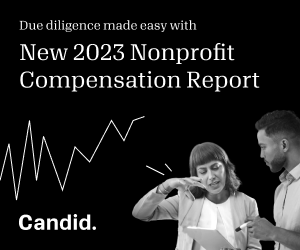Why climate philanthropy falls short, but I’m not giving up: A fundraiser’s perspective

Decades of inaction on climate are catching up with us. Devastating floods, fires, and extreme weather events occur with alarming frequency, and warnings from scientists become increasingly dire. Despite these urgent realities, between 2009 and 2020, less than 1 percent of total U.S. foundation grantmaking has gone to all types of climate philanthropy. Why are philanthropists neglecting climate at a crucial time? Our collective and individual survival is threatened. As the crisis worsens, shouldn’t self-preservation instincts motivate philanthropic investment in climate action?
During years of fundraising for climate nonprofits, I’ve wondered about these questions. I’ve spent hours talking with colleagues and sympathetic philanthropists who are equally mystified. The discrepancy between the existential scale of the climate crisis and the relatively minuscule scale of philanthropy’s response to it baffles us. Some suggest that the lack of charitable giving stems from the intimidating complexity of climate science, climate denial more broadly, or a tendency to view climate as a political issue. These factors may all partly be to blame. However, medical research remains one of the largest areas for giving, showing philanthropists’ willingness to invest in technically complex areas. I have encountered numerous donors who are not climate deniers and do not see climate change as a partisan issue. Yet, while some have donated generously in support of climate solutions, most philanthropists professing fear for our planet’s future continue to allocate their giving in a way that does not reflect alarm.
I believe that this discrepancy comes from a fundamental philosophical conflict between climate activism and philanthropy. The worldview underpinning climate activism is defined by an acute awareness of ecological scarcity, an appreciation for our limited natural resources, and the harsh reality that we are running out of time to avoid catastrophic climate outcomes. Only a few grains of sand remain in the climate activist’s metaphorical hourglass, and soon the hourglass itself will be lost in a climate disaster. Yet the assumption prevails that the hourglass can be turned over with each generation. Legal frameworks allowing foundations to exist in perpetuity project an infinite future for these investment vehicles. Philosophically speaking, philanthropists and climate activists are starting from very different places.
The finite nature of ecological resources is a core concept of the environmental movement. Time is not on our side. We are losing species at a rate compatible with extinction. Atmospheric CO2 climbs ever higher. By contrast, a doctrine of ever greater prosperity in the future drives our financial and political systems—and, by extension, philanthropy. This outlook celebrates the idea that endless growth is not only possible, but desirable. Recent racial and economic justice movements have helped expose the false narrative that infinite growth alone will make it possible for anyone to become rich, provided they work hard enough. However, the enticing prospect of limitless wealth still guides the majority of financial institutions, including philanthropic ones. U.S. financial regulations allow foundations to grow over time, as long as they direct just 5 percent of their assets to charity each year. Foundations, too, are thus conscripted into the markets’ inexorable march toward growth.
Generational preservation of philanthropic resources presupposes a future on a planet in ecological balance, where there will still be meaningful opportunities to donate the proceeds of investments that have held their value. The scorched hellscape that science confirms is our planetary destiny if we do not take urgent action is an incongruous setting for fantasies of philanthropic largesse by generations to come. Despite seemingly opposing worldviews, philanthropy and the climate movement can, and must, find common ground and fruitful collaboration. Recent trends confirm that a modest but increasing number of foundations are spending down. While not specifically climate-focused initiatives such as the Giving Pledge and Half My DAF show that liberating resources to help a world in crisis is an idea gaining traction.
I remain optimistic we can bridge the philosophical divide separating climate activists and philanthropists. This will require frank conversations in the context of authentic relationships. We are out of time. Philanthropic resources to support the climate solutions are sorely lacking. Our climate systems are strained to the breaking point. However, a focus that is defined by these deficits is not without hope. The virtue of scarcity is that it creates value. When things are scarce, we have an opportunity to recognize that we ought to cherish those things. We have only one planet. The time to act is now, and philanthropy has an important role to play.
Rowena Koenig is development director for the Climate Emergency Fund.








Why animal welfare must be the next frontier for climate funders